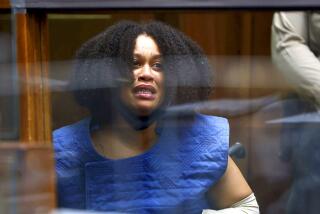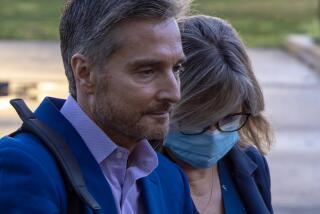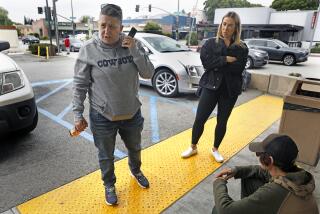Doggedly Determined
What would a story about a miraculous recovery be without a dog named Ed?
So there the dog was, entering from stage left with perfect timing, just as Amy Moeller, 23, struggled to find the right words Wednesday to describe her fight back from massive head injuries that had left her comatose and near death for six weeks.
“Eddie!” Moeller yelled out, making eye contact with the black and white Queensland heeler as he was led into her room in the rehabilitation hospital at Long Beach Memorial Medical Center.
On previous visits, Ed was kept outside. But Wednesday the rules were bent a bit because it was Amy’s last day in the hospital.
Calling your dog ordinarily wouldn’t be a big deal.
But as Amy called Ed, her doctors, nurses and physical therapists were studying her reactions closely.
What they saw was a reassuring bright light behind her blue eyes, a huge grin--signs of life and an alert mind that are considered normal for most but extraordinary for those who have suffered the kind of severe head injuries that Amy had.
“I still can’t explain it totally,” said Dr. Dan Zehler, a neuropsychologist and member of the team of physicians and therapists who worked with Moeller. “I wouldn’t have bet you would have this kind of recovery this fast. This is one of those cases I’ll remember--the kind of case you get maybe once every 20 years.”
Moeller also suffered a broken leg, a lacerated liver and a punctured lung in a devastating car crash in San Francisco July 6. Rescue crews spent half an hour cutting her out of the wreckage. Then she spent six hours in surgery.
The young woman, a paralegal in the San Francisco law office of O’Melveny & Myers, was taking Ed to a nearby park for a morning romp when a van broadsided the car. Ed wandered around San Francisco for three days before showing up at the apartment Moeller shared with her boyfriend, Gus Ramirez, an investment banker. Ramirez had gone on San Francisco television with a photo of Ed asking the city to help find him.
Amy was treated first in the trauma unit at San Francisco General Hospital. Then after several weeks she was moved to Long Beach for treatment at the hospital’s rehabilitation unit. In Long Beach, physicians revived her using intensive drug stimulants to “wake” her brain in combination with experimental therapy called hyperbaric oxygen treatments, or massive doses of oxygen to the brain.
Three weeks after the accident, Amy’s eyes blinked open for the first time, but it was weeks longer before she emerged from the coma and began to communicate. She essentially has had to learn to talk, eat, walk and dress herself all over again.
During her recovery, her family set up a computer at her bedside, and that became her chief means of communicating with the outside world. Moeller said she spent two or three hours a day tapping out e-mail messages to family and friends.
“My mind moves a lot faster than my mouth,” she said, typing an e-mail message to her brother, Mike, just minutes before she was wheeled out of her room for the last time.
Treatment in Long Beach allowed Moeller, who was raised in Rancho Palos Verdes, to be close to her parents--Dr. John Moeller, a psychiatrist, and her mother, Jan Moeller, a hospice nurse.
The Moellers gave their daughter the master bedroom in their waterfront home at Portuguese Bend on the Palos Verdes Peninsula.
Surrounded by friends, including members of the prayer group Jan Moeller belongs to at Mary Star of the Sea Church in San Pedro, they had a big welcome home party for Amy on Wednesday afternoon.
The Moellers said they never gave up hope that someday their daughter would return home.
“We were devastated,” Moeller said of the accident. “But she is such a fighter, and has such a good spirit, that we knew she was down there somewhere [in the coma] and would find a way to fight her way out.”
More to Read
Sign up for Essential California
The most important California stories and recommendations in your inbox every morning.
You may occasionally receive promotional content from the Los Angeles Times.









